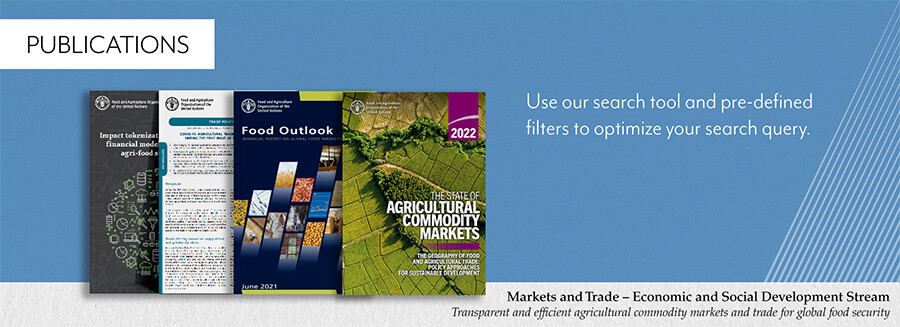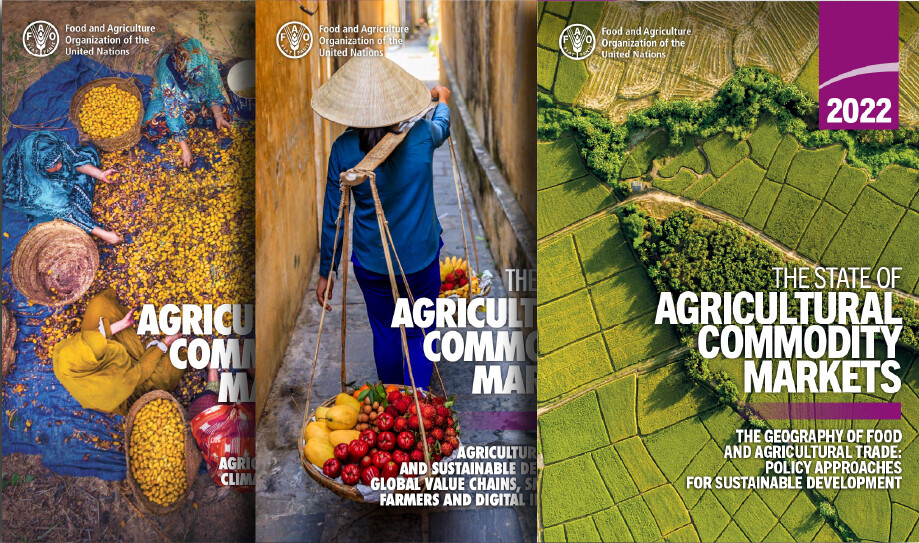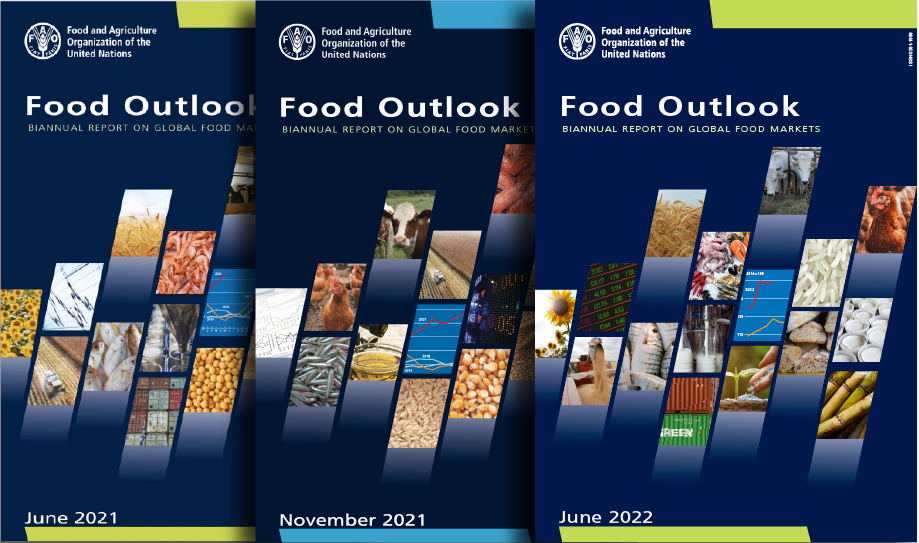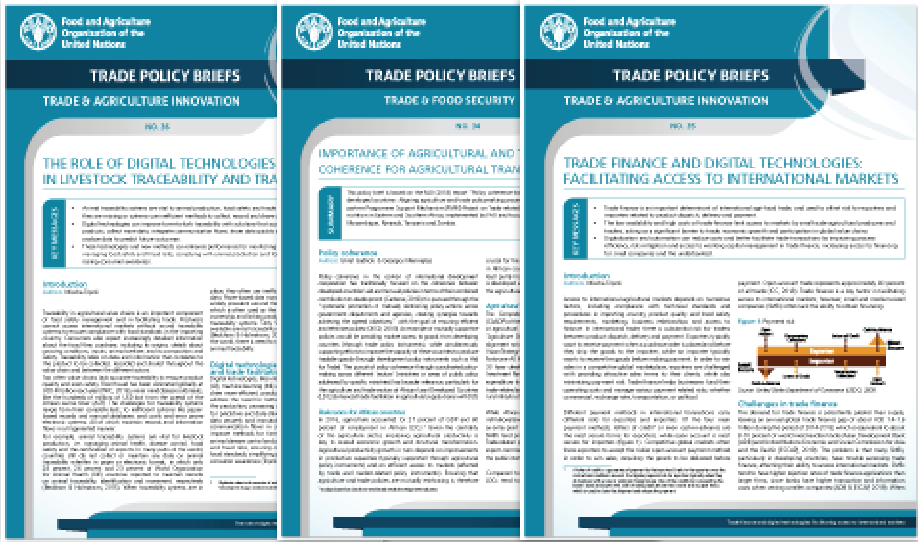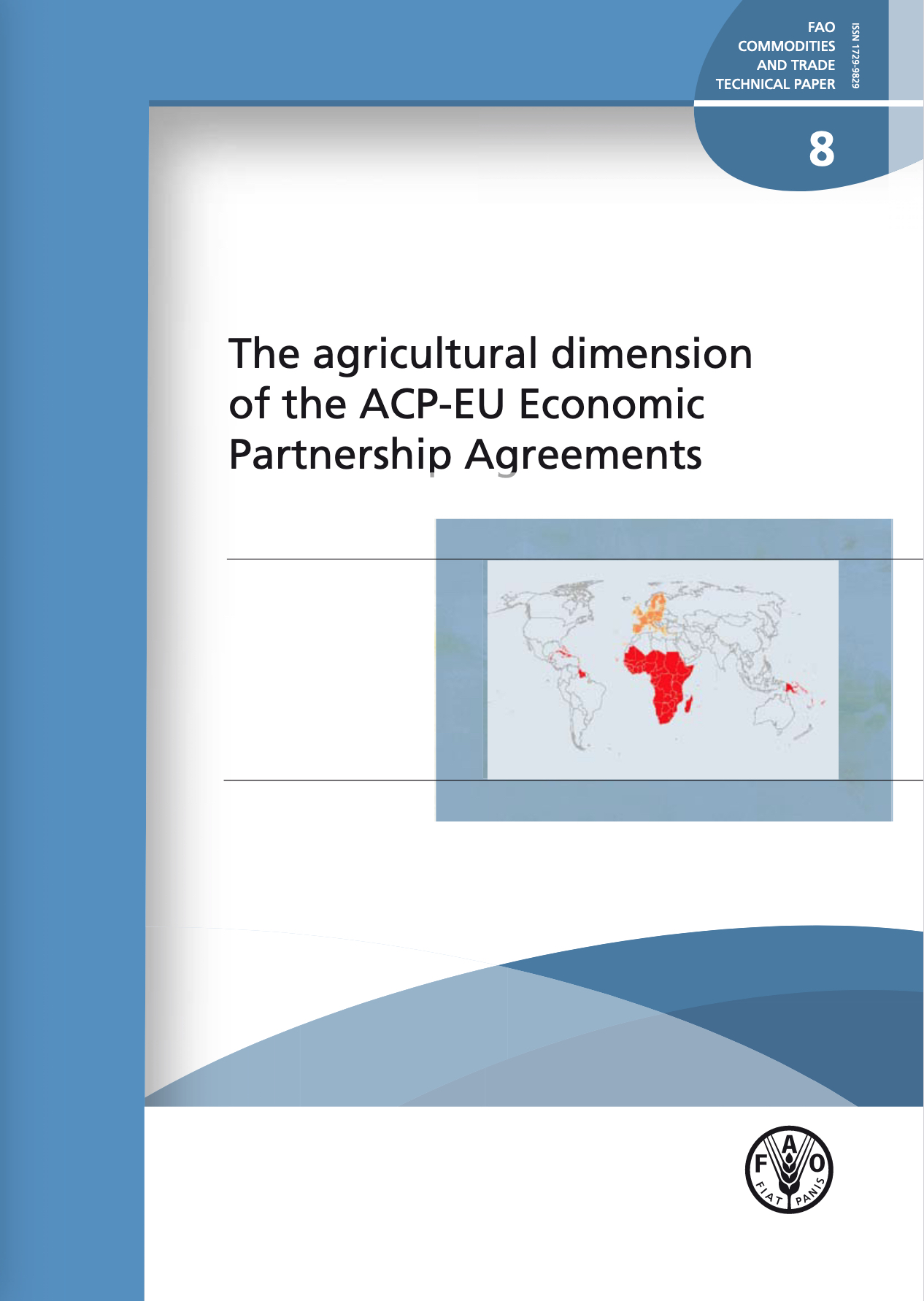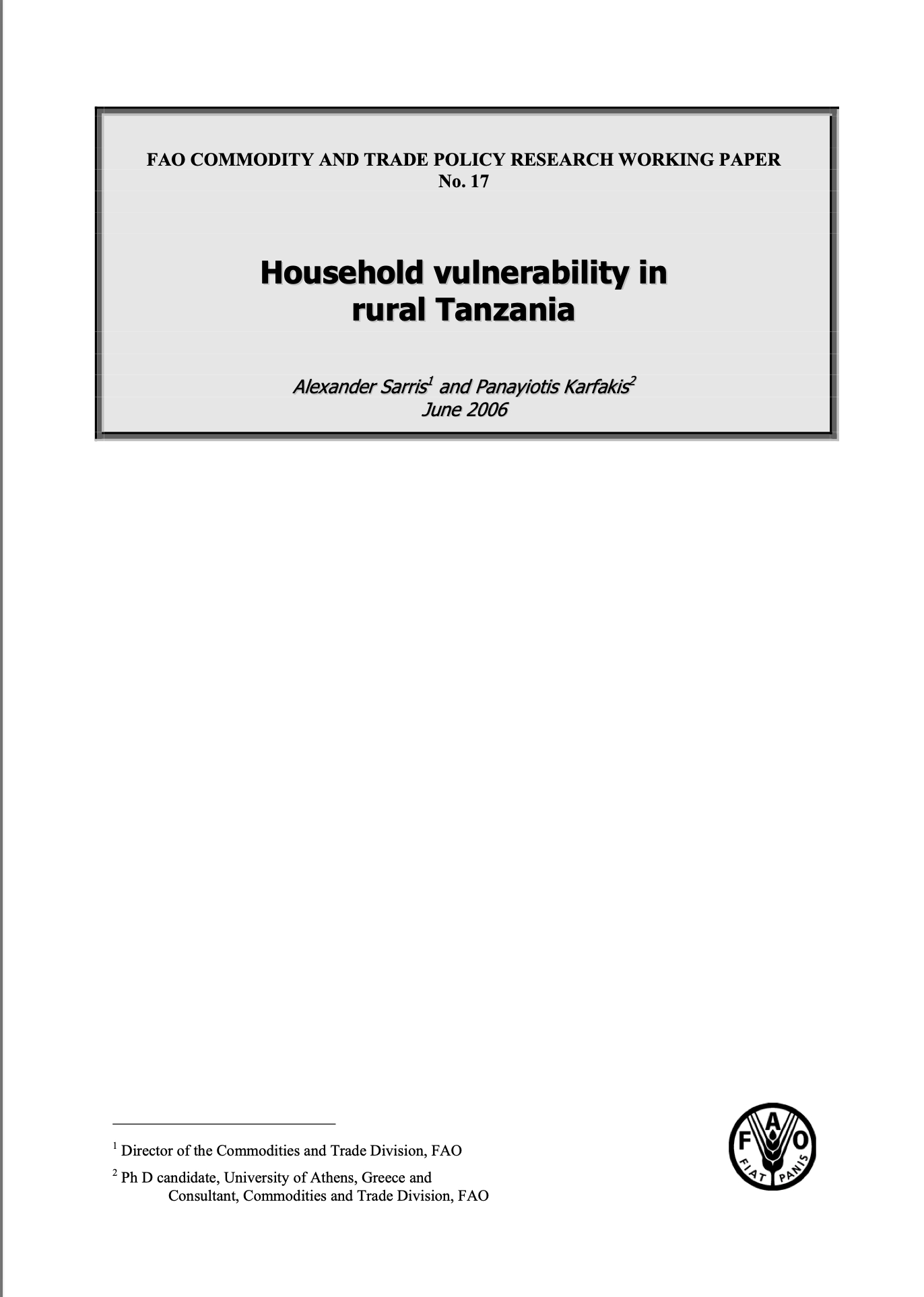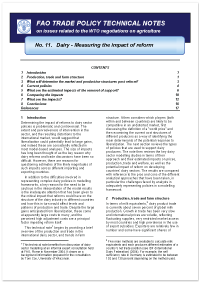Publications
The EST publications hub showcases the entire output of the division. The best way to find publications is by way of using our search facility wherein you can select pre-defined filters to optimize your search query.
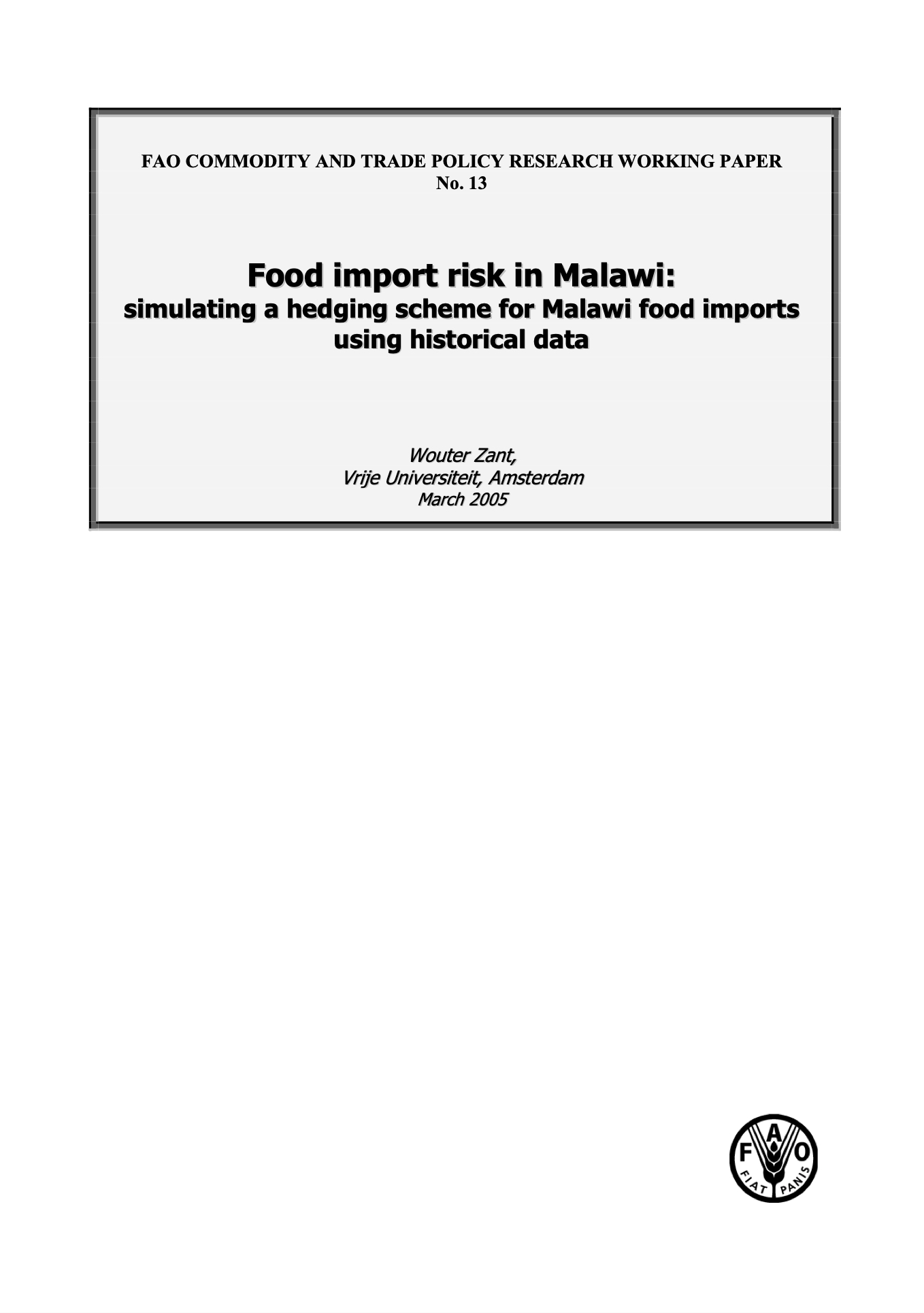
Food import risk in Malawi: simulating a hedging scheme for Malawi food imports using historical data
During the 1980s and 1990s least developed countries (LDCs) encountered increasing difficulties in maintaining national food security. By the turn of the century commercial food import bills reached unprecedented heights in terms of domestic food consumption. The already precarious state of food security has been aggravated by occasional “spikes” in food import prices. Additionally, food aid has been reduced substantially by the donor community. The combination of these three developments...
he African Caribbean and Pacific (ACP) countries are facing several major sets of closely interlinked forces that are likely to have significant impact on the development of their agriculture (including fisheries) sectors and their food security situation. The possible conclusion and outcome of both the negotiations for Economic Partnership Agreements (EPAs) under the Cotonou Agreement (with the EU) and the WTO Doha Round pose serious concerns on the future of...
This paper develops a measure of rural household vulnerability that combines existing approaches to estimating idiosyncratic risks with an approach to measuring covariate risk arising from crop production. The methodology is applied to rural households in Tanzania, using household surveys in two export crop producing regions. The results suggest that covariate risk arising from crop production faced by rural households is substantial and increases with farm size. Consumption is estimated...
This paper explores empirically the issue of the demand, namely the willingness to pay (WTP), for rainfall-based insurance, in the context of a poor agrarian economy, with rural households significantly dependent on agricultural commodity risks. Using data from recent household surveys in the Kilimanjaro and Ruvuma regions of the United Republic of Tanzania, both important agricultural producing regions, the paper ascertains the nature of the weather related risks faced by...

The role of agriculture in reducing poverty in Tanzania: A household perspective from rural Kilimanjaro and Ruvuma
This paper explores how farm productivity affects poverty, and how various factor market constraints affect farm productivity. The empirical analysis draws on representative surveys of farm households in Kilimanjaro and Ruvuma, two cash crop growing regions in Tanzania. We find that poorer households do not only possess fewer assets, but are also much less productive. We find that agricultural productivity directly affects household consumption and hence overall poverty and welfare....

Market access and preferential trading schemes: evidence from selected developed and developing countries
This report is aimed at analyzing the degree of protection faced by exporters in the EU, Japan, the United States, China, India and Brazil, and at identifying the contribution of product groups to the observed degree of market access. Data on the level of applied trade barriers provided by the MAcMap database is employed to compute Mercantilistic Trade Restrictiveness Indexes (MTRIs) on the basis of bilateral trade flows generated within...
The Kalman Filter is used to estimate a structural time-series model of cotton supply for 30 countries and 16 aggregated regions. Estimated short run supply elasticities with respect to the world price are presented for all 46 countries and regions. While they are broadly within the expected range in light of previous work, they indicate extensive cross-country and regional heterogeneity, as well as considerable parameter uncertainty in some cases. Finally,...

Threshold cointegration in the sugar-ethanol-oil price system in Brazil: evidence from nonlinear vector error correction models
In this paper, the possibility of nonlinear dynamic adjustment in the sugar-ethanol-oil nexus in Brazil is examined. Threshold vector error correction models are employed to test for linearity in the adjustment of prices of sugar and oil, ethanol and oil and ethanol and sugar. Strong evidence of threshold type nonlinearity is found. The results suggest that sugar and oil and ethanol and oil prices are characterised by discrete threshold behaviour,...
Special Report - FAO/WFP Food Supply and Demand Assessment for Aceh Provind and Nias Island (Indonesia)
Earlier in the year from 12 to 25 March 2005 FAO and WFP conducted a first assessment of food supply and demand in the tsunami affected districts of Aceh Province. The assessment showed that the livelihoods of approximately 600 000 people had been directly affected by the tsunami of 26 December 2004. At the same time rice production was expected to show some 200,000 tonnes surplus for the 2005/06 marketing...
Determining the impact of reforms to dairy sector policies is problematic and controversial. The extent and pervasiveness of intervention in the sector, and the resulting distortions to the international market, would suggest that liberalization could potentially lead to large gains, and indeed these are consistently reflected in most model-based analyses. The size of impacts has long been thought of as the key reason why dairy reforms and trade discussions have...

